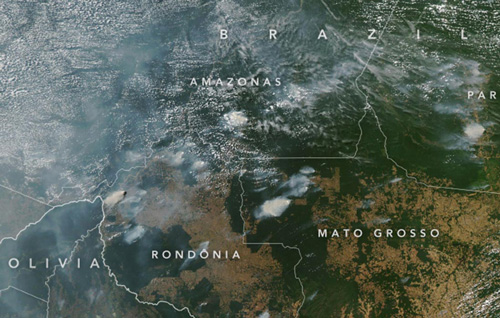Warmer than average sea surface temperatures in the tropical North Atlantic Ocean so far in 2020 have set the stage for an active hurricane season and elevated the risk of fires in the southern Amazon, according to scientists at NASA and the University of California, Irvine. Variations in ocean sea surface temperatures alter weather patterns around the world. In the case of the Atlantic Ocean, warmer surface waters near the equator draw moisture northward and away from the southern Amazon, favoring the development of hurricanes. As a result, the southern Amazon landscape becomes dry and flammable, making human-set fires used for agriculture and land clearing more prone to growing out of control and spreading.










